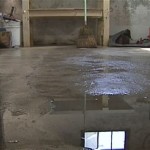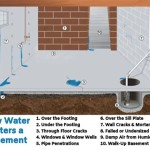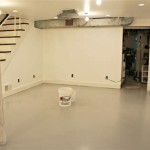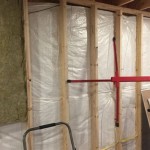How To Add A Sump Pump To A Basement
A sump pump is a device that helps to remove water from a basement or crawl space. It is a submersible pump that is placed in a sump basin, which is a hole dug in the floor of the basement or crawl space. When the water level in the sump basin rises, the sump pump turns on and pumps the water out of the basement or crawl space.
Sump pumps are important for preventing flooding in basements and crawl spaces. They can also help to reduce the risk of mold and mildew growth, which can cause health problems. If you live in an area that is prone to flooding, or if you have a basement or crawl space that is damp or musty, you should consider installing a sump pump.
Installing a sump pump is a relatively easy DIY project. However, it is important to follow the manufacturer's instructions carefully. Here are the steps on how to add a sump pump to a basement:
- Choose a location for the sump pump. The sump pump should be placed in the lowest point in the basement or crawl space. This will ensure that it can collect the most water.
- Dig a hole for the sump basin. The sump basin should be about 18 inches deep and 12 inches wide. It should be lined with gravel to help keep the pump from clogging.
- Place the sump pump in the sump basin. The pump should be placed on the bottom of the sump basin and secured with bolts.
- Connect the discharge pipe to the sump pump. The discharge pipe is the pipe that carries the water away from the sump pump. It should be at least 1 1/2 inches in diameter and should be connected to the pump with a flexible coupling.
- Connect the sump pump to a power source. The sump pump should be connected to a GFCI outlet. This will help to protect the pump from electrical shock.
- Test the sump pump. Once the sump pump is installed, it should be tested to make sure that it is working properly. Pour a bucket of water into the sump basin and check to see if the pump turns on and pumps the water out.
Sump pumps are an important part of any basement or crawl space. They can help to prevent flooding and reduce the risk of mold and mildew growth. If you live in an area that is prone to flooding, or if you have a basement or crawl space that is damp or musty, you should consider installing a sump pump.

Diy Sump Pump Install Your Own Smd Fluid Controls

Diy Sump Pump Install Your Own Smd Fluid Controls

How To Install A Sump Pump In Basement

Adding A Sump Pump To An Existing Basement American Dry Systems

Basement Sump Pump Installation Charlotte Nc

8 Essential Sump Pump Maintenance Tips Plumbwize

Basement Sump Pump Installation 101 Kc Waterproofing

Basement Sump Pumps Zoeller Pump Company

Adding A Sump Pump To An Existing Basement American Dry Systems

Sump Pump Installation How To Install A
See Also








